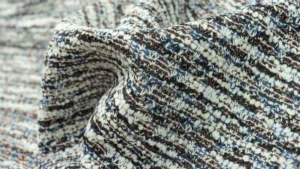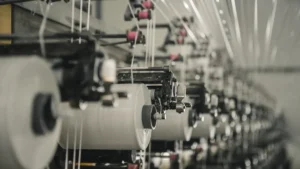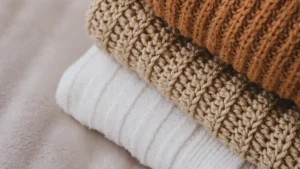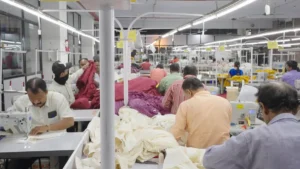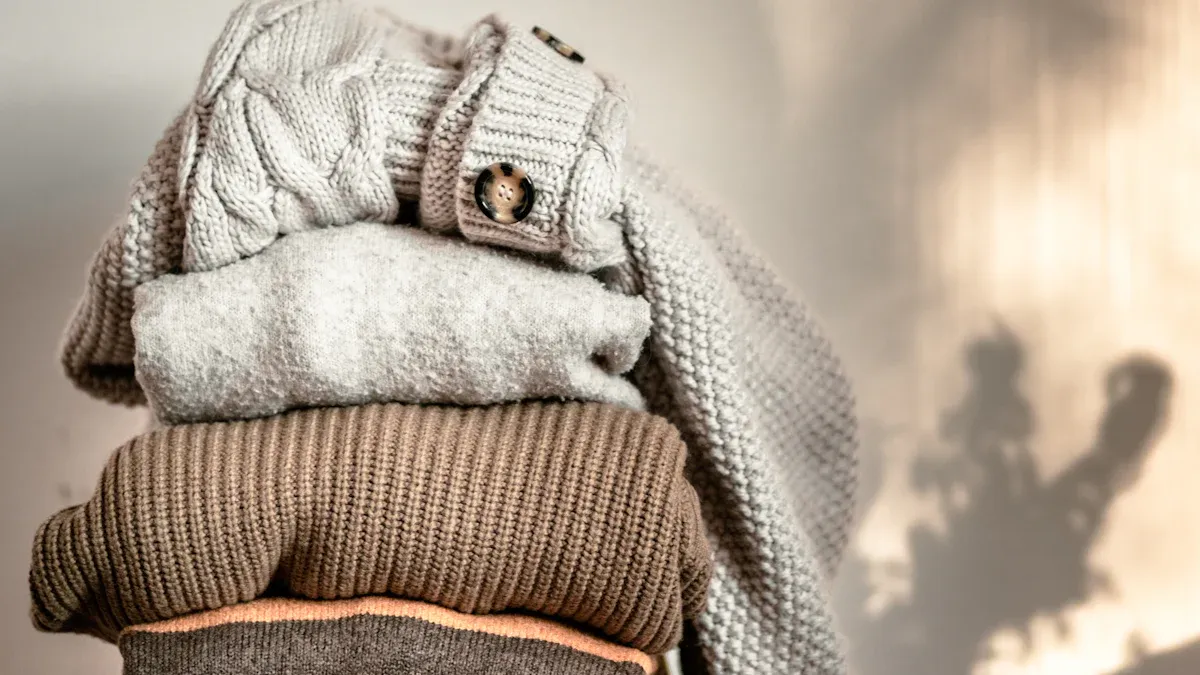
The main difference between 2-Ply vs 4-Ply Cashmere lies in the number of twisted strands in the yarn. This distinction affects key characteristics in every cashmere garment. Research shows that as the ply count increases, cashmere becomes thicker, warmer, and heavier, making 4-ply cashmere ideal for winter wear. On the other hand, 2-ply cashmere is lighter and more breathable, perfect for layering or wearing in milder weather. Multi-ply yarns, like 4-ply, restrict airflow more than single-ply or 2-ply cashmere.
Brands aiming for luxury and high quality should consider both the ply count and fiber quality. The right combination ensures optimal comfort, durability, and appearance for each cashmere piece.
Higher ply cashmere, such as 4-ply, keeps you warmer and reduces air permeability.
Lower ply cashmere, like 2-ply, results in lighter fabric that breathes better.
Regardless of 2-Ply vs 4-Ply Cashmere, fiber quality remains crucial.
Key Takeaways
2-ply cashmere has two strands twisted together. It feels light and soft. It is good for layering or mild weather.
4-ply cashmere uses four strands twisted together. It is thicker, warmer, and stronger. It works well for winter and cold places.
Fiber quality is more important than just ply. Good cashmere uses fine fibers and the right ply for each piece.
Brands should pick ply based on what the garment is for. They need to balance warmth, weight, comfort, and strength.
Brands should check supplier certifications and test samples. This helps make sure the cashmere is high quality and from a good source.
Cashmere Ply Explained
What Is Cashmere Ply?
Cashmere ply means how many strands are twisted together to make yarn for clothes. In making fabric, ply helps decide how thick, warm, and strong the item will be. If there is only one strand, it is called single-ply cashmere. This kind is very light and can be easily damaged. Two-ply cashmere has two strands twisted together. This makes the fabric thicker and warmer.
Ply changes how cashmere feels and works.
More strands make the fabric thicker and stronger.
Single-ply cashmere is soft and bends easily but can break.
Two-ply or more gives better warmth and lasts longer.
Imagine single-ply like one piece of paper. It bends and tears easily. Two-ply is like two papers glued together. It is harder to bend and tear.
The quality of the fiber, like how long and thin it is, also matters. Having more ply does not always mean better cashmere. The best cashmere uses good fibers and the right ply for what you need.
Ply and Yarn Structure
The yarn in cashmere changes when you add more plies. Plied yarns are made by twisting two or more yarns together. This makes the yarn rounder, stronger, and less likely to break. Plied yarns do not pill or stretch out as much.
Twisting many strands spreads out the stress.
Plied yarns look even and do not come apart easily.
More ply, like 4-ply, makes the fabric heavier and warmer. This is good for cold weather.
Less ply, like 2-ply, keeps the fabric light and lets air through. This is good for layering.
Special machines twist the strands in different ways to balance the yarn. This helps the yarn work better. When you add more plies, the yarn costs more to make. But it also gets stronger and keeps you warmer. Cashmere with more ply feels nicer and lasts longer. But it might be too hot for some places.
2-Ply vs 4-Ply Cashmere
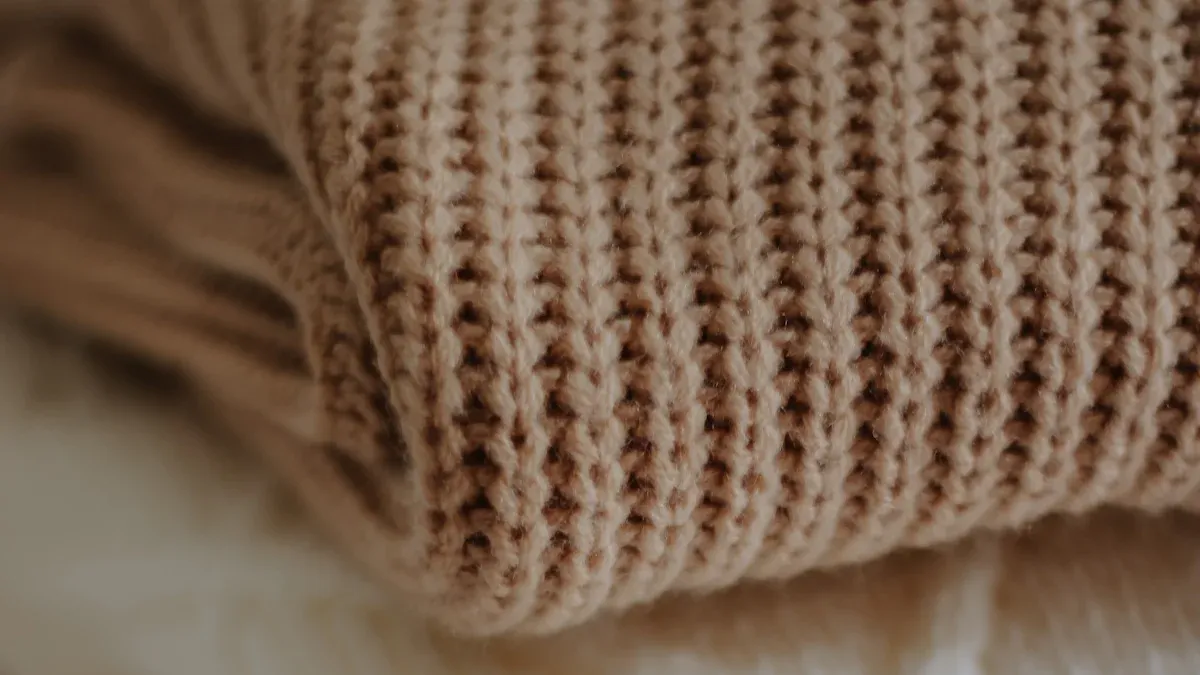
Durability and Strength
Fashion brands look at 2-ply and 4-ply cashmere to see which lasts longer. Two-ply cashmere has two strands twisted together. This makes the knit tighter and helps sweaters keep their shape. Clothes made this way do not stretch out after washing. Most good cashmere uses this method. Single-ply cashmere can lose its shape and sag over time. Four-ply cashmere uses four strands, so it is even stronger. It does not stretch out easily. The extra strands make it last longer, especially for winter sweaters that get worn a lot.
Note: More plies do not always mean better quality. The fiber grade and how it is made matter more for how long it will last.
2-ply cashmere is popular in Europe and is good for daily use.
4-ply cashmere is stronger and works well for thick sweaters.
Warmth and Weight
The biggest difference between 2-ply and 4-ply cashmere is warmth and weight. Four-ply cashmere feels thick and heavy. It keeps you warmer and is great for cold weather. Many brands use 4-ply for sweaters you wear without a jacket. Two-ply cashmere is lighter and easier to wear in different seasons. It lets air move through, so you stay cool in warmer weather.
2-ply is light, good for layering, and can be worn all year.
4-ply is heavy, warm, and best for outer layers in winter.
More plies mean more yarn, so it is warmer and costs more.
Comfort and Drape
How cashmere feels is important to brands and shoppers. The texture changes when you add more plies. Two-ply cashmere feels soft and smooth. It hangs gently on your body and looks nice for light sweaters and scarves. Four-ply cashmere feels thicker and heavier. It gives clothes a firm shape, which some people like for cardigans and chunky sweaters.
2-ply cashmere is soft and bends easily, so it is comfy all day.
4-ply cashmere is thicker and holds its shape, making it feel fancy and warm.
Brands should pick the right ply for each item. Light, airy clothes are best with two-ply cashmere. Heavy, warm clothes work best with four-ply.
2-Ply Cashmere Features
Key Benefits
Two-ply cashmere is strong, soft, and useful. It is made by twisting two threads together. This makes the yarn light but also tough. Clothes made from it keep their shape well. They do not get damaged as easily as single-ply ones. Two-ply cashmere lets air pass through the fabric. This helps your body stay cool or warm in different weather. You can wear these clothes in cool or mild weather and feel good.
Many fancy brands in Europe like two-ply cashmere. It is easy to use for layering. People pick it when they want to look nice and feel comfy all year.
Two-ply cashmere is not heavy like higher ply types. It does not feel bulky or tight. The yarn can stretch, so the clothes move with you. This makes them comfy for daily wear.
Best Uses
Designers pick 2-ply cashmere for items that need to look nice and work well. Light sweaters and scarves are the most common. These feel soft and gentle on your skin. Two-ply cashmere is also good for cardigans and vests. It does not make your outfit heavy.
Scarves that are soft and let air through
Cardigans and layers for when the weather changes
In fancy fashion, two-ply cashmere helps brands make things for many kinds of weather and people. It is easy to design with and meets high standards.
4-Ply Cashmere Features
Key Benefits
4-ply cashmere is known for being very warm and strong. Brands pick this yarn for clothes that need to keep people warm in cold weather. The yarn has four twisted strands, so the fabric is thicker and heavier than lower ply types. This makes it trap more air, which helps keep you warm even when it is very cold outside. Studies show cashmere can be up to three times warmer than sheep’s wool if they weigh the same. The fibers have a crimp and a hollow center. This creates more air pockets and helps keep heat in.
More warmth for winter and cold places
Stronger and lasts longer with less damage
Feels rich and fancy, adding luxury to clothes
Heavier weight gives a cozy and safe layer
Note: 4-ply cashmere is warmer and stronger, but fiber quality and how it is made also matter for how long it lasts. How you wear and care for your sweater is important to keep it looking new.
Best Uses
Designers use 4-ply cashmere for thick sweaters, cardigans, and other strong knitwear. These clothes work best as outer layers in winter or in very cold places. The extra weight and thickness make them not great for layering, but they are perfect for wearing alone to stay warm.
Thick cashmere sweaters for winter
Heavy scarves and wraps for outside
Knitwear made to last a long time
4-ply cashmere lets brands make clothes for people who live in cold places. These clothes give comfort and protection, so they are a top pick for fancy winter outfits.
Cashmere Ply Comparison
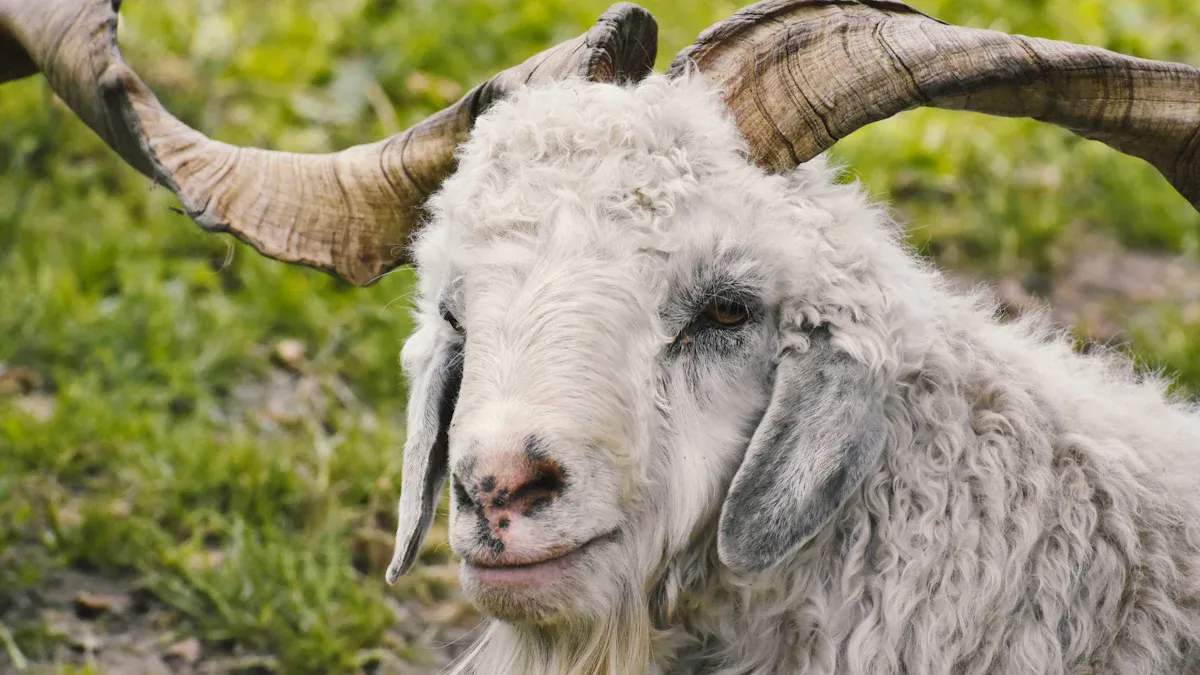
Quick Reference Table
Fashion brands look at 2-ply and 4-ply cashmere to see which is better for them. The table below shows the main ways they are different. It compares warmth, weight, strength, and price. This guide helps buyers know what each type of cashmere is like.
Feature | 2-Ply Cashmere | 4-Ply Cashmere |
|---|---|---|
Warmth | Moderate | High |
Weight | Lightweight | Heavy |
Durability | Good | Excellent |
Price | Lower (avg. $300) | Higher (avg. $400+) |
Best For | Layering, mild weather | Winter, cold climates |
Tip: 4-ply cashmere uses about twice as much fiber as 2-ply. This makes it heavier and warmer. The extra weight also makes it cost more. It feels thick and fancy.
Summary of Use Cases
Fashion brands pick ply based on how the cashmere will be used. Two-ply cashmere is good for light sweaters, scarves, and cardigans. These clothes are great for layering and wearing all year. Many brands like 2-ply because it is soft and warm enough. It is a top pick for items that cost less than $400.
Four-ply cashmere is best for winter clothes. Brands use it for thick sweaters, strong cardigans, and heavy wraps. The extra strands make these clothes warmer and tougher. This is why they are good for cold places. Some brands, like William Lockie, use tight knitting with 4-ply to make sweaters last a long time.
2-ply cashmere: Best for layering and mild weather.
4-ply cashmere: Best for winter wear and people who want the most warmth and strength.
Picking the right ply helps each cashmere item fit what buyers need.
Sourcing and Pricing
MOQ and Costs
Fashion brands need to know how ply changes costs and order sizes. Suppliers often have different minimum order amounts for 2-ply and 4-ply yarns. Many big suppliers show order rules for 2-ply cashmere by color. They do not always give clear rules for 4-ply yarns. This means brands should ask suppliers about 4-ply orders.
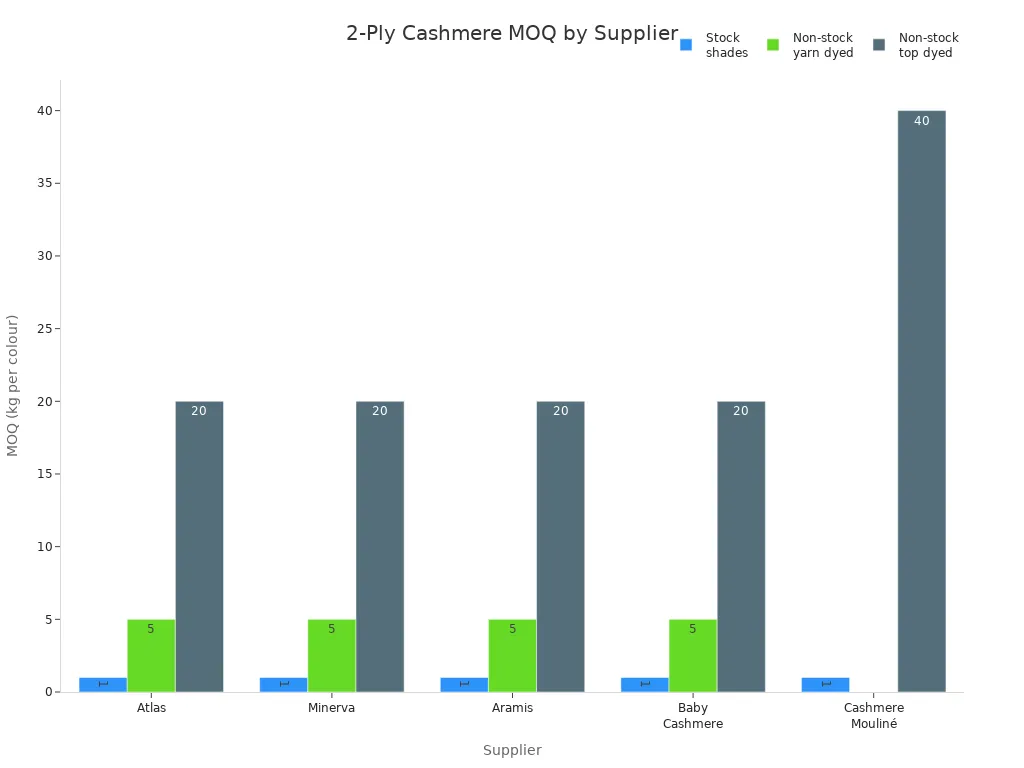
The table below lists usual order amounts for 2-ply cashmere from top suppliers:
Supplier | 2-Ply Cashmere MOQ (kg per colour) | 4-Ply Cashmere MOQ (kg per colour) |
|---|---|---|
Atlas | Stock shades: 1kg | N/A |
| Non-stock yarn dyed: 5kg |
|
| Non-stock top dyed: 20kg |
|
Minerva | Stock shades: 1kg | N/A |
| Non-stock yarn dyed: 5kg |
|
| Non-stock top dyed: 20kg |
|
Aramis | Stock shades: 1kg | N/A |
| Non-stock yarn dyed: 5kg |
|
| Non-stock top dyed: 20kg |
|
Baby Cashmere | Stock shades: 1kg | N/A |
| Non-stock yarn dyed: 5kg |
|
| Non-stock top dyed: 20kg |
|
Cashmere Mouliné | Stock shades: 1kg | N/A |
| Non-stock top dyed: 40kg |
|
Hand Maiden Cashmere | N/A |
Ply count changes the price too. Higher ply, like 4-ply, uses more yarn. This makes clothes heavier and warmer. It also raises the cost to make and buy them. The fiber quality and ply together set the final price. Finer fibers and higher ply make the most expensive cashmere.
Quality Considerations
Brands must think about ply, fiber quality, and what buyers want. Good cashmere starts with Grade A fibers. These are softer and feel nicer. Labels should say the grade and ply, like 2-ply or 4-ply. This helps show how strong and well-made the item is. Stitching should look tight and even. Seams should be neat and strong. Ribbed cuffs and hems should lie flat and look tidy.
Tip: Pick suppliers with certifications like OEKO-TEX or The Good Cashmere Standard. These show the material is good and made the right way.
Where cashmere comes from is important. Italy, Scotland, and Mongolia are known for great cashmere. Brands should get samples before big orders. This helps check how the fabric feels and looks. Using green energy and new machines can make better cashmere and help a brand’s image.
Quality checks include certifications like the Cashmere Quality Standard and ISO 9001. Brands should visit factories and talk often with suppliers. New tools, like DNA checks and blockchain, help prove the cashmere is real and made right. These steps help brands sell good products that people trust.
Fashion brands need to think about the main differences between 2-ply and 4-ply cashmere when they buy it.
2-ply has two threads, so it is strong and can be used in many ways. 4-ply gives more warmth and makes clothes feel thicker.
How soft and long-lasting cashmere is depends on fiber quality, not just the ply.
The table below shows how weather and who will wear the clothes help decide which is best:
2-Ply Cashmere | 4-Ply Cashmere |
|---|---|
Light and easy to use | Heavy and keeps you warm |
Good for layering and mild weather | Best for cold places and thick clothes |
Brands should check if the fiber is good, try out samples, and make sure the supplier has the right certificates to get the best cashmere.
FAQ
What does “ply” mean in cashmere?
Ply tells how many yarn strands are twisted together. Two-ply has two strands. Four-ply has four strands. More plies make fabric thicker, warmer, and stronger. Brands pick ply to fit the weather and what customers want.
Is higher ply always better for cashmere quality?
No, higher ply is not always better. Fiber grade, length, and how it is made matter more. Good cashmere uses fine fibers and the right ply for each item. Brands should check both ply and fiber quality before buying.
Which ply is best for lightweight sweaters?
Two-ply cashmere is best for light sweaters. It feels soft and hangs nicely. It lets air move through. Many brands use two-ply for all-year wear and layering. This ply is good for mild weather and people who want comfort without heaviness.
2 ply vs 4 ply cashmere,does 4-ply cashmere cost much more than 2-ply?
Yes, 4-ply cashmere usually costs more money. It uses twice as much fiber. This makes clothes heavier and warmer. The extra fiber and work raise the price. Brands need to plan their budgets when picking higher ply.
How can brands verify cashmere quality from suppliers?
Brands should ask for samples and check certifications like OEKO-TEX. They should look at fiber grades. Visiting factories and using outside tests help prove it is real. Good suppliers give clear papers and follow the rules.
Is 2-ply cashmere good?
Yes, 2-ply cashmere is widely considered an excellent choice for high-quality knitwear. It offers a balance of softness, warmth, and durability, making it ideal for sweaters, scarves, and cardigans. Compared to 1-ply, it is less prone to pilling and holds its shape better over time.
What does “2-ply cashmere” mean?
2-ply cashmere refers to yarn made by twisting two strands of cashmere together. This construction results in a thicker, more durable yarn that enhances the garment’s structure and longevity.
Is 2-ply cashmere better than 1-ply?
In most cases, yes. 2-ply cashmere is more resistant to wear and pilling, provides better insulation, and retains its shape more effectively than 1-ply, making it better suited for everyday wear and cooler climates.
Is 2-ply cashmere still soft?
Definitely. Despite being thicker and more durable, 2-ply cashmere remains exceptionally soft and luxurious. The softness primarily depends on the grade and length of the cashmere fibers used.
Does 2-ply cashmere pill?
While all cashmere may pill with wear, 2-ply construction significantly reduces pilling compared to single-ply garments, especially in high-friction areas.
Is 2-ply cashmere suitable for all seasons?
2-ply cashmere is best suited for fall and winter due to its added warmth and slightly heavier weight. For warmer months, lighter 1-ply cashmere or blends may be more appropriate.
How do I care for 2-ply cashmere?
Gently hand wash in cold water with a mild detergent or use a delicate wool cycle. Lay flat to dry, avoid twisting or wringing, and store folded rather than hanging to preserve the garment’s shape.
What products are typically made from 2-ply cashmere?
You’ll find 2-ply cashmere commonly used in sweaters, cardigans, shawls, scarves, and other premium knitwear designed for regular wear and cooler temperatures.
Is 2-ply cashmere worth the investment?
Yes. Although it may be more expensive than 1-ply options, 2-ply cashmere offers longer-lasting wear, better performance, and a more luxurious feel—making it a smart choice for quality-conscious buyers.



